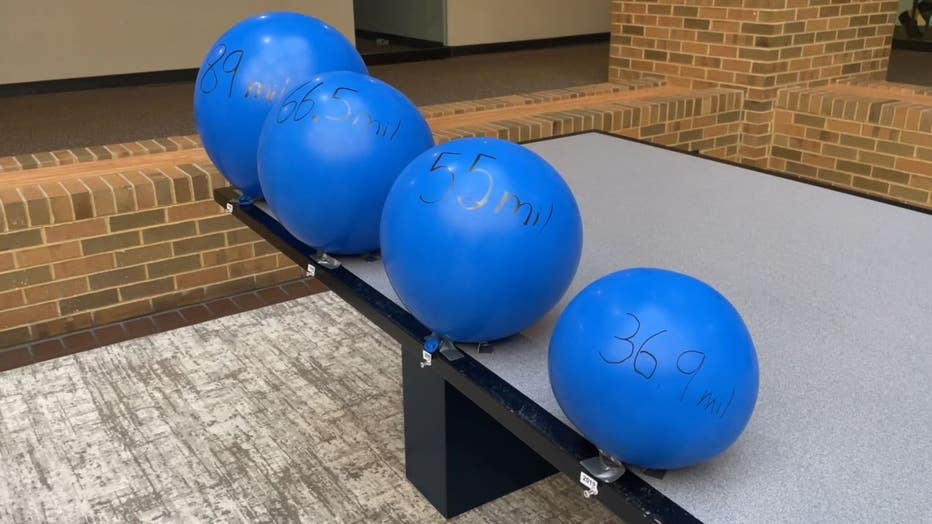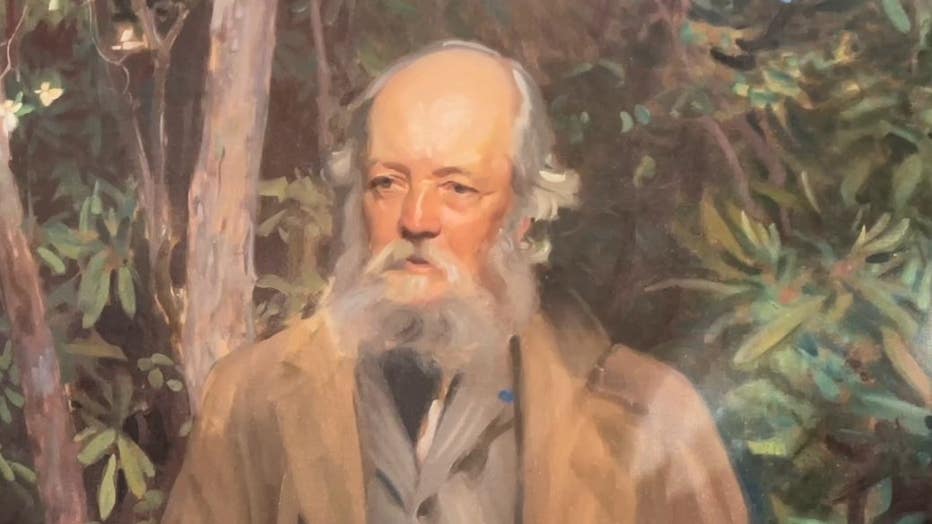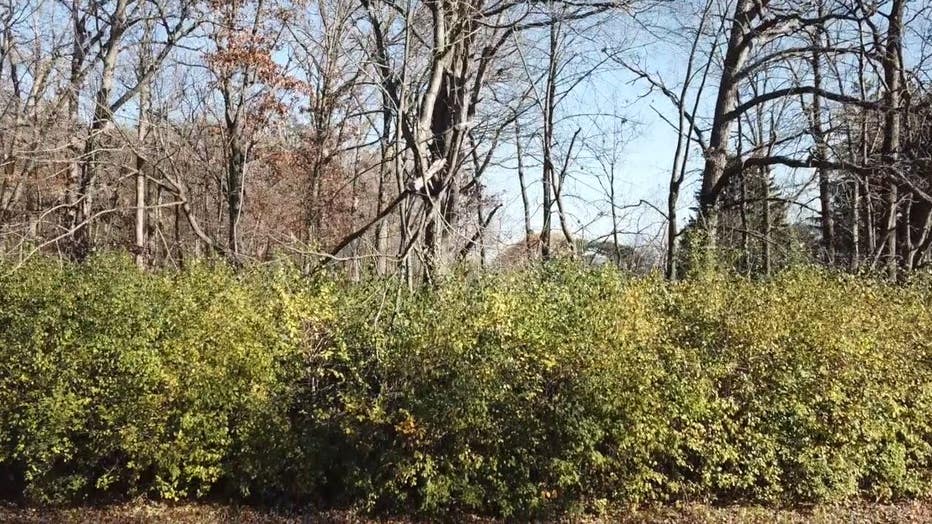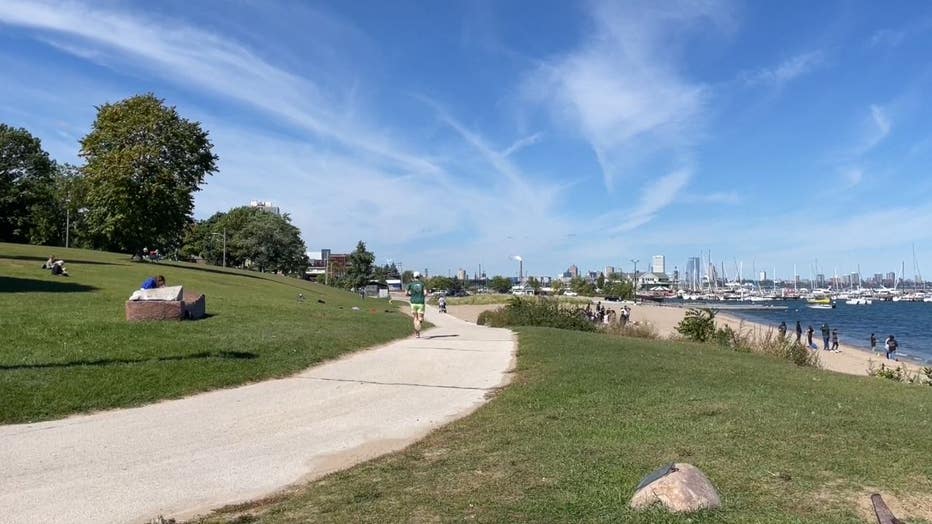Milwaukee County Parks budget crisis, funding flat for decades

Milwaukee County Parks budget crisis, funding flat for decades
Milwaukee County Parks is facing a budget crisis. Battling deferred maintenance, inflation and invasive species -- the parks themselves are in trouble.
MILWAUKEE - It's no secret Milwaukee County Parks has some beautiful locations in the region.
From rich forests to lakeside beaches, county parks offer a variety of habitats and experiences you can enjoy year round. But behind the beauty is a crippling budget and degrading ecosystems that are all at risk of getting worse because of funding shortfalls.
"It’s been estimated that our deferred maintenance is around $500 million," said Jeremy Lucas, Milwaukee County Parks director of administration.
SIGN UP TODAY: Get daily headlines, breaking news emails from FOX6 News
Spanning an area over 15,000 acres, the land the park system manages is daunting. It's equivalent to over 750 Lambeau Fields, and if it was all a state park it would be the largest in Wisconsin. So how does the staff pull this off?
"It’s like having each (individual) staff manage multiple Lambeau Fields by themselves," Lucas said."

The area Milwaukee County Parks manages is equivalent to the area of roughly 750 Lambeau Fields
For the staff, it's gotten harder and harder while demands for the parks have only increased. Their funding has been flat for over 30 years.
Budget shortfalls have been recouped through the revenue they produce themselves from beer gardens, boating and golfing, but it has ballooned to a level not seen anywhere else in the country according to Lucas.
FREE DOWNLOAD: Get breaking news alerts in the FOX6 News app for iOS or Android.
"Fifty percent of our budget is revenue we generate ourselves," said Lucas.
Madison, Minneapolis, Chicago and just about every city in the Midwest with over 200,000 people blow Milwaukee out of the water in terms of property tax dollars dedicated to their parks and spending per capita according to a recent Wisconsin Policy Forum report titled "Sinking Treasure."

Budget per year has stayed roughly the same since 1989 at $40 million
Property taxes are the main way parks are funded, and since 1989 those dollars have been spent in other areas such as public safety. In simpler terms: We're asking Milwaukee County Parks to do more with less, and the stresses are showing.
Factoring in the plateaued funding with inflation, funding should be over double what it is now. According to Lucas, if the budget kept up with inflation, it would be over $90 million. But it's never been above $45 million – and this means less money can be spent on park improvements, staff retention, and land management.

Factoring in for inflation the budget has been deflating rapidly over the last 30 years
"Generally, if we want to provide large increases to one department, we’re going to have to identify other areas to make decreases," said Joe Lamers, Milwaukee County budget director.
So it's not as simple as just moving some money around.
The parks department was in its prime from an investment standpoint in the early 1900s with the help of Frederick Olmsted and other park visionaries. Zoos, horse racing and ski jumps were all services the parks department provided – and each year more and more green space was added to the growing city of Milwaukee.

Frederick Olmsted, considered the father of landscape architecture, had a huge influence on Milwaukee parks
The emphasis on land acquisition is a key reason to this day why we have such a variety of park locations. The parks initially began to fulfill a huge demand for green space in the city and across the nation.
"The purpose of parks is to serve the mental, physical and emotional well-being of people," said park historian Virginia Small.
All this space in a perfect world wouldn't need any work, but thanks to invasive species brought in from Asia and Europe, fire suppression, over-browsing from deer, and human use, our parks are rapidly changing away from their historic norms.

Buckthorn at Greenfield Park in the fall shows just how bad the situation is with invasive species in our parks. Everything green is choking native flora.
Species such as Buckthorn create dense shade in the understory of forests and choke future native trees from growing. Garlic mustard, honeysuckle, dames rocket, burdock, Japanese knotweed, purple loosestrife and dozens of other species out-compete our native plants because they have no predators.
"Here at Hoyt Park, they choke out 90% or more of the native plants," said Doug Drysdale, an invasive species volunteer.
In the fall, it's eerily easy to see. By October, when most of the leaves have fallen from the canopy, the understory is lush green because of buckthorn. The purple berries they produce are eaten birds and quickly spreads to new forests. Odds are you have some in your backyard, and it is time-consuming and expensive to remove at a county-wide scale.

South Shore Park view of downtown
Drysdale and hundreds of other volunteers slow the march of buckthorn, but this isn't happening for every park. The permanent solution offered up is an increase in dedicated funding from taxes and increasing revenue streams. This would allow the parks to hire more staff, decrease differed maintenance and remove invasive species.
"It’s time to change the way that Milwaukee County and local government is funded," said Lamers.
There's no simple solution but if we want the future generations of Milwaukee to enjoy the parks like we have, then something has to change.

